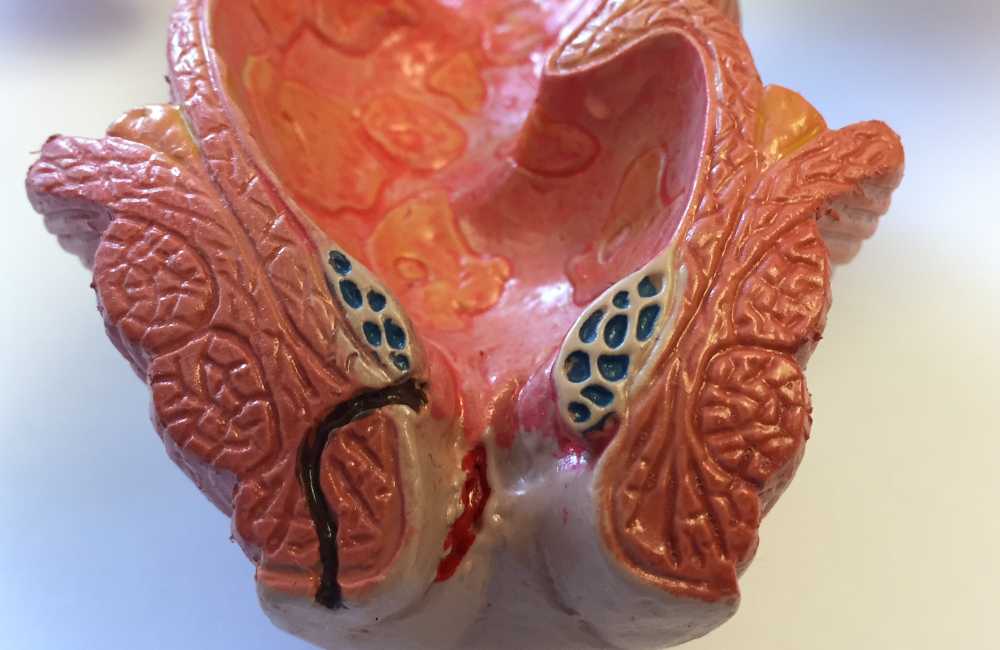Chronic abdominal pain is a common disorder in children and adolescents worldwide. It affects the child’s well-being, and the costs of missed school days and the use of healthcare resources are high.
Abdominal pain is pain felt anywhere in the area between the lower ends of the ribs and the pelvis. It used to be called recurrent abdominal pain but this term is now obsolete and not considered a diagnosis.
Most young children will point to the umbilicus (belly button) when asked to describe the location of their abdominal pain. However, pain centred on the belly button could be due to several causes that should be considered when evaluating a child with chronic abdominal pain.
Some of those causes are not very serious while other causes require close and long-term care. However, when diagnostic uncertainty increases, pain does not resolve over time, or parents are hard to reassure, extensive testing and referral easily set in.
As a consequence paediatricians perceive chronic abdominal pain as a time-consuming and therapy-resistant disorder.
What is chronic abdominal pain (CAP)?
CAP is commonly defined as long-lasting, intermittent or constant abdominal pain with a minimum of three or more episodes over at least 3 months duration that is severe enough to affect daily activities in a child over 3 years of age.
Causes of chronic abdominal pain
- Gastroesophageal reflux disease (GERD).
- Constipation.
- Celiac Disease.
- Lactose, Fructose Intolerance.
- H pylori Gastritis (Endoscopic diagnosis).
- Inflammatory Bowel Disease.
- Small Intestinal Bacterial Overgrowth (SIBO)
- Giardiasis.
- Helminthiasis.
The commonest cause is Small Intestinal Bacterial Overgrowth (SIBO), constipation and parasitic infections (Giardiasis, Helminthiasis).
-
Constipation
Constipation is a major cause of chronic abdominal pain in children from toddler age to preteen years. It is best defined as the failure to achieve complete evacuation of the lower colon rather than in terms of infrequency or firmness of stool.
It is 3 times more common in children with neurological conditions. The common causes range from “being too busy “ to evacuate, diet (usually high in constipating foods (i.e., cheese, pasta, starches) and low in fibre diet to withholding evacuation as you see in infants and younger children due to fear (anoretentive constipation).
This thus produces a dilated lower colon, erratic stool patterns and frequent encopresis, bleeding from rectal fissures, crampy pain that occurs during large meals and varies greatly in intensity, reduction in appetite and distention of the abdomen (from stool and gas) that occurs in the evening.
-
Small Intestinal Bacterial Overgrowth (SIBO)
Small intestinal bacterial overgrowth (SIBO) is a common cause of non-specific gastrointestinal symptoms in children. This occurs when there is an abnormal increase in the overall bacterial population in the small intestine — particularly types of bacteria not commonly found in that part of the digestive tract. This condition is sometimes called blind loop syndrome.
It is a heterogeneous disorder characterized by excessive growth of select microorganisms within the small intestine. This excessive bacterial biomass, in turn, disrupts host physiology in a myriad of ways, leading to gastrointestinal and non-gastrointestinal symptoms and complications, such as chronic abdominal pain, abdominal distention, diarrhoea, and flatulence, amongst others.
-
Functional abdominal pain
Abdominal pain that cannot be explained by any visible or detectable abnormality, after a thorough physical examination and appropriate further testing if needed.
Functional abdominal pain can be intermittent (recurrent abdominal pain or RAP) or continuous. Although the exact cause is not known, nerve signals or chemicals are secreted by the gut or brain(also called the bidirectional gut-brain axis).
It may cause the gut to be more sensitive to triggers that normally do not cause significant pain (such as stretching or gas bloating). Because of this change in bowel function, this type of abdominal pain is often referred to as “functional abdominal pain.”
The trigger for functional abdominal pain varies from one patient to another and may transform over time even in the same patient. In some cases, children previously suffering from anxiety, depression and other psychiatric disorders may show an exaggerated pain response.
Sometimes, the parent and the child may not be consciously aware of any stress or emotional disturbances preceding gastrointestinal infections. Parents and children need to be reassured that functional abdominal pain is not life-threatening.
However, functional abdominal pain may have negative effects on the child’s physical and psychological state.
-
Parasitic infections (Giardiasis, Helminthiasis)
-
- Giardiasis
Giardiasis is one of the causes of chronic abdominal pain that is often overlooked. It is caused by G. lamblia, a protozoan parasite that is spread either from person to person by faecal-oral contamination or by transmission in water. Cysts, once ingested, form trophozoites in the duodenum and lodge themselves among the intestinal villi.
About 50 to 70% of children who are infected don’t have symptoms. The most common clinical symptom is abdominal pain and in some cases, it may be associated with vomiting and bloody diarrhoea.
The drugs of choice for the treatment of giardiasis include metronidazole, tinidazole, and nitazoxanide. After treatment, the parasites are expected to be cleared from the stool in three to five days, and the symptoms resolve in five to seven days. Cure rates with metronidazole alone are 85 to 95%.
-
- Helminthes
‘Helminth” means parasitic worm. They are one cause of chronic abdominal pain in children. They are caused by infection with roundworm, hookworm or whipworms and symptoms include diarrhoea, abdominal pain, intestinal obstruction, anaemia, and retarded growth and cognitive development.
Children become infected by ingesting roundworm and whipworm eggs that have matured in soil contaminated by human faeces, or by walking barefoot in contaminated soil where human hookworm eggs have hatched, producing larvae that penetrate the skin.
-
Irritable bowel syndrome (IBS)
IBS is a functional bowel disorder that causes chronic abdominal pain and altered bowel habits. Changes in bowel movements may be diarrhoea or constipation, or both.
The cause of irritable bowel syndrome (IRS) is not known and the pathophysiology is still not properly understood, however, both psychosomatic and psychosocial factors have been implicated.
The Rome IV criteria are standardized symptom-based criteria for diagnosing IBS. These criteria require the presence of abdominal pain for at least 1 day per week in the last 3 months along with more or 2 of the following:
-
- Pain related to defecation.
- Pain associated with a change in frequency of defecation.
- Pain associated with a change in the consistency of stool.
-
Inflammatory bowel disease (IBD)
Abdominal pain is frequently reported in children with ulcerative colitis and Crohn’s disease. The pain, which typically occurs in the lower abdomen, is cramping in nature and increases after meals or activity.

The pain is reduced by eating smaller meals, which contributes to anorexia and growth impairment that occurs in children with inflammatory bowel disease.
More subtle features include:
-
- Delayed puberty.
- Anaemia that is unresponsive to iron therapy.
- Recurring oral aphthous ulcers.
- Chronic liver disease.
- Large joint synovitis or arthritis.
The diagnosis is established by small bowel barium contrast x-ray and colonoscopy with biopsies.
Investigating chronic abdominal pain
The routine screening laboratory evaluation of abdominal pain in children includes viz
- Complete blood cell count with differential.
- Erythrocyte sedimentation rate (ESR) to evaluate for anaemia. Leukocytosis and chronicity.
- Urinalysis.
- Urine culture.
- Stool analysis/stool culture for parasites.
- Giardia antigen.
- A chemistry profile to evaluate liver enzymes and amylase.
- Serology testing for Helicobacter pylori or amebae.
- Carbohydrate breath testing for lactose intolerance is indicated if empiric dietary interventions are inconclusive.
Diagnosis of chronic abdominal pain
The diagnosis of abdominal pain in children has five components. The relative value of each component depends on the child’s age and, in some cases, on the level of cooperation of the child and parents. The five components include viz
- History
From history, the location, intensity, character and duration of pain are ascertained. The child may indicate the location of the pain by pointing with one finger or with the whole hand and may rate the intensity of the pain on a scale of 1 to 5 or 1 to 10 or, for younger children, by pointing to a series of faces graded from smile to frown to tears.
Night pain or pain on awakening suggests a peptic origin, while pain that occurs in the evening or during dinner is a feature of constipation.
Also, the drug history should be noted and the influence of pain on the child’s daily activity is assessed through questions about school attendance, athletic endeavours and peer relationships.
- Physical examination
The careful examination helps exclude organic disease but also to show patients that their condition is being thoroughly evaluated.
-
- Inspect the abdomen for scars or distension and palpate for masses.
- Check perianal appearance: prominent perianal skin tags or fistulae suggest Crohn’s disease.
- Palpate for organomegaly, tenderness and/or abdominal mass.
- Because of the interaction between abdominal pain, nutrition and demands of growth, the anthropometric data of weight, height and growth velocity are documented.
- Laboratory testing
The results of the above-stated investigations are evaluated.
- Results of imaging studies
Sonography of the abdomen and pelvis is usually performed first to exclude nonintestinal origins of the pain.
Pelvic sonography is indicated because of its sensitivity to free fluid, the frequency of retroperitoneal disease and the visualization of the ileum for Crohn’s disease, adenopathy and chronic features of abscess from fistulas or Meckel’s diverticulum(congenital anomaly of the gastrointestinal tract)
- Response to empiric therapy
The child’s response to empiric intervention is part of the diagnostic evaluation. Before visiting a physician for a chronic complaint, most parents will have initiated a trial of dietary interventions, and over-the-counter medications for acid suppression or laxatives.
A symptom diary should be used to document the frequency of the pain, related events and response to intervention.
Since excessive undigested carbohydrates may contribute to abdominal pain, an empiric trial of lactose elimination or reduction of excessive juice intake is often appropriate
If the history and physical examination suggest the pain has a peptic origin, a trial of therapy with histamine H2 blockers may be indicated before confirmatory investigations.
Treatment for chronic abdominal pain
-
Dietary modifications
2-3 weeks of diet elimination trial is recommended and if no improvement, food is reintroduced.
-
- Lactose-free diet
For lactose intolerant children especially older children and adults. They can eat lactose-free dairy products including lactose-free milk, cheese, yoghurts etc.
-
- Fructose-free diet
Fructose (sometimes called fruit sugar) is a natural sugar that is mainly found in fruit, honey and processed foods, carbonated drinks, sorbitol, caffeine, fatty meals, diet candies, chewing gums etc.
-
- Gluten-free diet
Gluten is a protein found in wheat, barley, rye and the derivatives of these grains, including malt and brewer’s yeast. A gluten-free diet excludes all products containing these ingredients.
Those who are gluten-free can still enjoy a healthy diet filled with fruits, vegetables, meats, poultry, fish, beans, legumes and most dairy products. Such ingredients are naturally gluten-free and safe for individuals who do not have allergies to these respective food groups.

Screening for celiac disease is advised before initiating a gluten-free diet. If your child has been diagnosed with celiac disease or non-celiac gluten sensitivity, they’ll need to follow a strict gluten-free diet
-
- FODMAPs diet
FODMAPs is an abbreviation for Fermentable Oligosaccharides, Disaccharides, Monosaccharides and Polyols. Foods that are high in FODMAPslike garlic, onion, baked beans, rye and more, cause digestion issues for certain groups.
They are poorly absorbed in the small intestine and increase gut motility and secretions. A reduction in FODMAPs containing food improves symptoms of abdominal pain in children.
-
Laxatives
-
- Lactulose
Lactulose is a type of laxative called an osmotic laxative. A colonic acidifier is broken down in the bowel into substances that pull water out from the body and into the bowel to soften poo and make it easier to pass. Used for mild constipation but has a side effect of bloating (gas producing).
-
- Stimulant Laxatives
They relieve constipation by triggering the intestines to contract and push out hard faeces.( e.g. Dulcolax, Senna,castor oil)
-
- Lubricant laxatives
They make the stool slippery by lubricating the intestinal wall and stool mass by coating them with a waterproof film layer, preventing the faeces from drying out. e.g Cremaffin, oils.
-
- Rectal suppositories/enemas
This is the last resort for abdominal pain due to faecal retention or Recto sigmoid motility disorders.
-
- Luminal antibiotics in Small Intestinal Bacterial Overgrowth (SIBO)
A variety of antibiotics have been used in the treatment of SIBO, most with little supporting evidence. e.g Rifaximin, a minimally absorbed antibiotic with high luminal activity, others are Augmentin and Azithromycin.
-
Anticholinergic
Anticholinergic agents are antispasmodics that inhibit intestinal smooth-muscle depolarization at the muscarinic receptor. g (Dicyclomine, hyoscyamine). They have a faster onset of action and are helpful in visceral hyperalgesia. Can decrease intestinal and colonic motility, which can further worsen symptoms and it has to be used with caution
-
Analgesics
-
- Opioid analgesics
Chronic abdominal pain is a challenging medical condition in our daily practice. This condition often requires opioid medications when other treatments fail and it is used for severe abdominal pain e.g. morphine. It significantly reduces motility.
Side effects of dependence and respiratory depression can be a challenge.
-
- Non-steroidal anti-inflammatory drugs (NSAIDs)
They reduce inflammation but are not related to steroids, which also reduce inflammation. NSAIDs work by reducing the production of prostaglandins. Prostaglandins are chemicals that promote inflammation, pain, and fever.
The anti-Prostaglandin effect of NSAIDs such as diclofenac, and ibuprofen (non-selective Cox inhibitors) can aggravate gastric ulcer, duodenal ulcer, inflammatory bowel disease and irritable bowel and has increased risk of bleeding as a side effect.
-
- Drotaverine
Drotaverine is an antispasmodic and has a good relaxing effect on intestinal smooth muscle, which helps in alleviating pain and does not have side effects like anticholinergics.
It has the fastest onset of pain relief in 5 – 12mins and is well tolerated across all age groups, with no inhibitory effect on GI motility.
Drotaverine does not mask the symptoms of acute abdomen and does not interfere with diagnosis& further treatment modalities. It is also free from anticholinergic side effects.
-
Tricyclic antidepressants / SSRIs
Antidepressants can help regulate abnormal bowel functions, as well as other IBS symptoms. Tricyclic antidepressants (TCAs) help with diarrhoea, serotonin reuptake inhibitors (SSRIs) help with constipation, and serotonin-norepinephrine reuptake inhibitors (SNRIs) can help with visceral pain (visceral hyperalgesia).
Amitriptyline and Nortriptyline are examples of tricyclic antidepressants. The body converts amitriptyline to nortriptyline; therefore the effects of both medicines are similar.
Conclusion
Chronic abdominal pain in Children is more common than is reported and it is the most common reason for school absenteeism with constipation being the most common cause.
It is important to rule out the organic cause in each case and the workup should be case-based. Please note that referral to a pediatric gastroenterologist for a further workup is advised.

